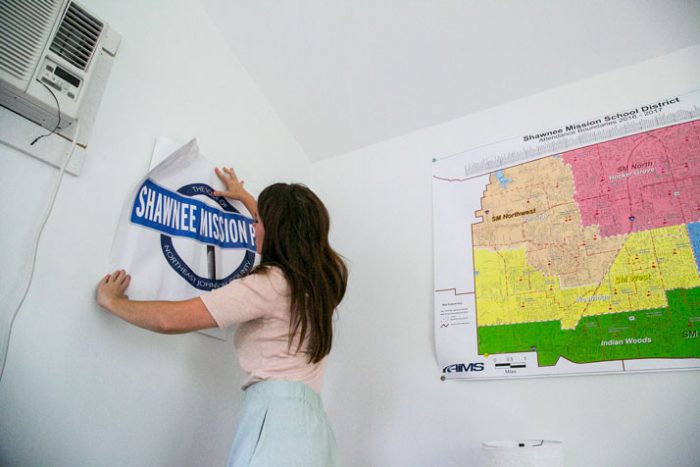
When Jay Senter decided to pull the trigger on launching a paywall for his local news site the Shawnee Mission Post in northeast Kansas, to say that he was nervous about readers’ reaction is an understatement.
“We had huge pits in our stomach. We’d worked really, really hard and built up a very good reputation and a very loyal readership. It was a major step into the unknown,” he said.
Senter, the publisher of the Post, and his publisher emeritus Dan Blom had attempted other avenues for funding the news organization in its first seven years of existence. They started out with ads, supplemented by a donation drive, but it wasn’t enough to live off of. The team also tried to expand its coverage areas in the hopes of drawing more local advertisers, but that flopped about half a year in.
“We had tried everything else, but the reasons for why everything else isn’t working are very clear,” Senter said.
After the paywall went up, subscriptions actually started rolling in. Within three or four days, the number of subscribers to the Shawnee Mission Post surpassed the number of donors in its most recent campaign. In three months, the Post hit the threshold of 1,000 subscribers — which Senter had set as a goal for the paywall’s first year.
“It’s been a very validating few months. You feel like the community is behind you and wants you to be doing what you’re doing,” he said.

A Prairie Village, Kansas native, Senter met his wife Julia Westhoff in college and returned to the area to raise their family. The local coverage from larger news organizations (Prairie Village is just outside of Kansas City, Kansas) that he had grown up with had faded away, but Senter was confident that the audience was still there. He launched the Prairie Village Post in June 2010 as a side gig, gaining an audience as he reported about local government meetings and the mayoral race with more nuance than the metropolitan or regional news folks did, he said. “There was nobody covering Prairie Village city council meetings anymore,” he said. “All these things were going under the radar.”
Four years later, Blom had joined the team and the Post had evolved from covering just the city of Prairie Village to almost all local happenings under the umbrella of the Shawnee Mission School District (hence the renaming). The site was generating enough advertising revenue that Senter could quit his day job. By 2015, though, Blom and Senter were looking for other financial options to reach sustainability. “We were wringing every ad dollar we could out of this site,” Senter said. “We were going to have to get some revenue streams from readers at some point. We were obviously very nervous about that because it’s not the norm.”
In fact, subscriptions have risen at national news organizations after the presidential election in the so-called Trump Bump, while more local organizations haven’t seen the same effects. Studies have shown, though, that younger generations might be more willing to pay for news — a hypothesis that Senter was willing to try out.The Shawnee Mission Post introduced an annual donation campaign in fall 2015 and netted $15,000 from just under 300 donors, Senter explained. Last year the campaign had about 350 contributors pitch in a total of $18,000. However, the site had between 50,000 and 60,000 regular unique visitors a month, with a core readership of 15,000 to 20,000 returning readers.
“[The donation campaign] grew nowhere close to…a game-changing thing on the revenue front,” Senter said. But it at least showed that some readers were willing to pay. “We always knew that we really were going to have some sort of major revenue from readers to make this work. We resigned ourselves to putting up a paywall.”
Here came the pit in Senter’s stomach. The paywall, instituted in April by Pigeon Paywall allows readers to view three stories for free, and the homepage is always free. After that, they are asked to pay $5.95 a month or $64.95 a year, which also includes a daily email newsletter.
Senter sought comfort in this analysis of streamlined local news business models by Stratechery’s Ben Thompson, in which he argues that the newspaper style of journalism includes top-heavy infrastructure that relates to producing a print product. Subscriptions, he said, may not save newspapers as a business model but could still preserve local news content with a leaner approach. (We’ve also discussed the sustainability of the local newspaper model here at Nieman Lab.)Thompson’s analysis was music to Senter’s ears. “It was the most perfect reflection of what we had experienced and the forces that led us to make that decision,” he said.
The Shawnee Mission Post currently has Senter as publisher, Blom as publisher emeritus, and Westhoff as the sales director, in addition to a few stringers each covering a town in the school district. Senter brought on a few other employees when the team tried to expand to covering the Blue Valley school district in a secondary site (which folded after about six months because of a lack of interest from local advertisers). But this small team is bringing news to readers who made more than 1.5 million site visits in 2016 alone. For context, the Shawnee Mission School District has the third-largest enrollment of students across the state of Kansas and is part of a county with more than half a million residents, according to Ballotpedia.
“We have a seven-year track record. Our audience knew what they would be missing if we weren’t there,” Senter said. “There really isn’t anybody else who’s consistently covering the institutions that we’re covering the way that we do and with the reliable frequency that we do.”
Senter believes that flipping the paywall switch has also incentivized the Post to do more accountability journalism and less fun clicks. “New restaurant openings had always been our number-one driver before the paywall went up,” he said. “That meant we would be pretty happy to publish four to five things a day that were ‘man drives into wet cement’ and ‘a new Mexican restaurant has opened.’ It’s good for entertainment online, but it doesn’t really affect people’s lives in the way that tax dollars are being spent.”
Subscriptions actually started popping up after the Post publishes articles about local government institutions rather than restaurants, Senter found. So the team responded by refocusing its coverage on civic life and tax dollars. Advertising still makes up more than half of the Shawnee Mission Post’s revenue sources, but Senter said it’s on pace to have at least 35 percent of revenue from subscriptions this year. The ultimate goal is to have two-thirds of revenue come from readers and the remaining third from advertisers.
Now, instead of being a “nervous wreck” the way he was at the launch of the paywall, Senter describes himself as an “evangelical” for having the audience as the primary revenue source.
“Nobody goes into journalism because they want to cater to advertisers and deliver them as many eyeballs as possible,” Senter said. “There’s this norm in place that you don’t pay for news, and especially not for some dinky little local news…But if you show people that you are able to provide info they’re not able to find anywhere else, it makes it an attractive business to own and operate. The [quality of the] journalism is a whole lot better as well.”